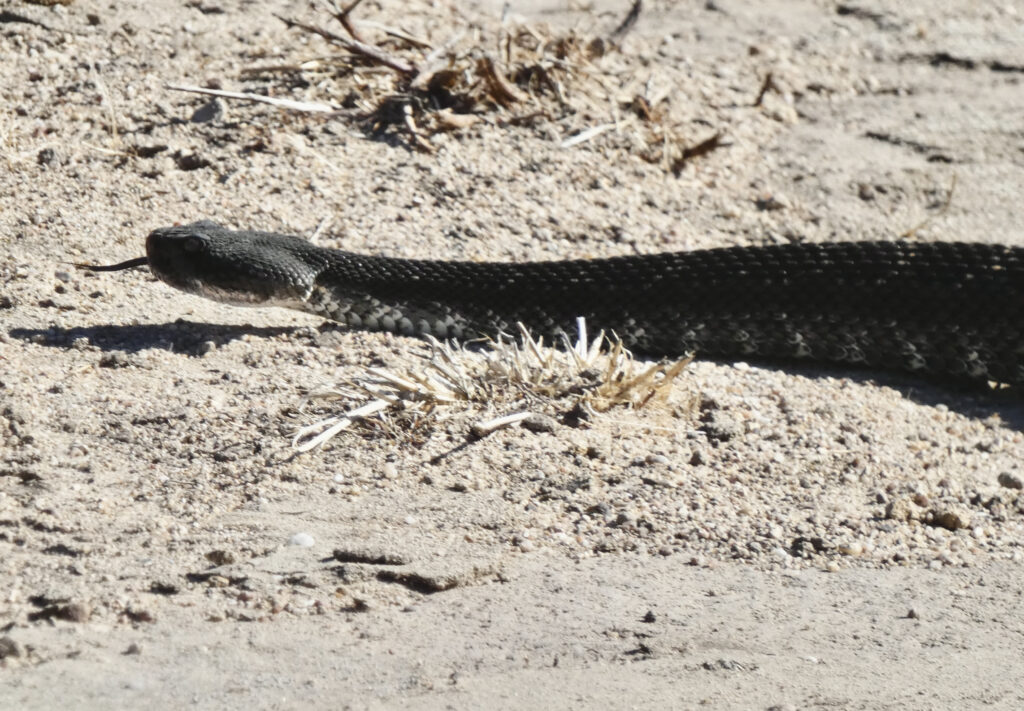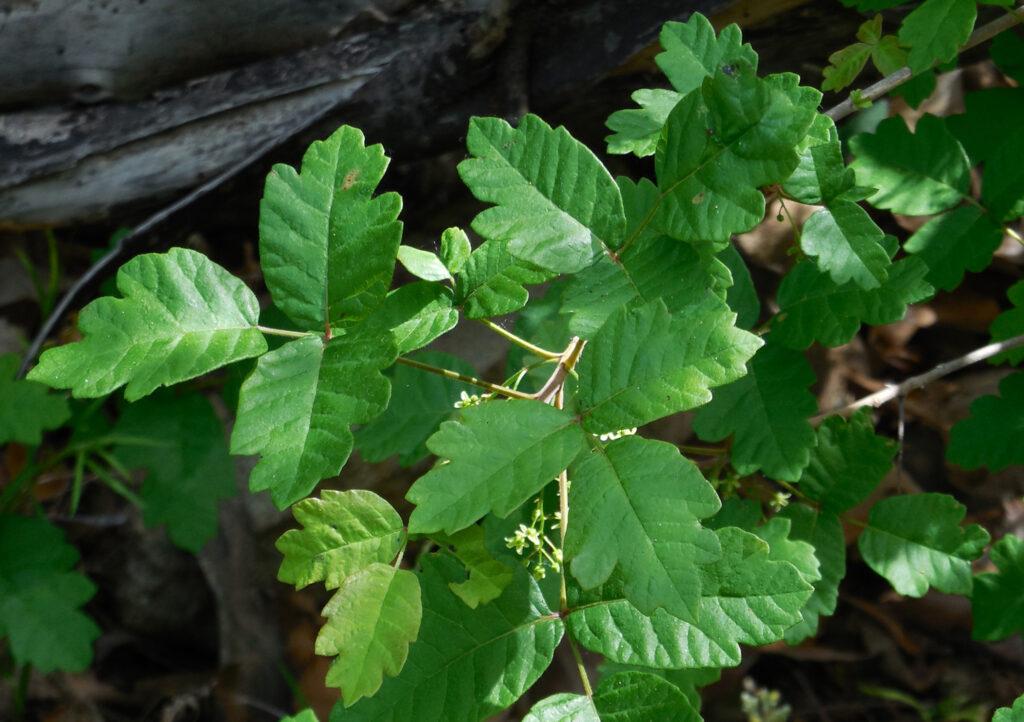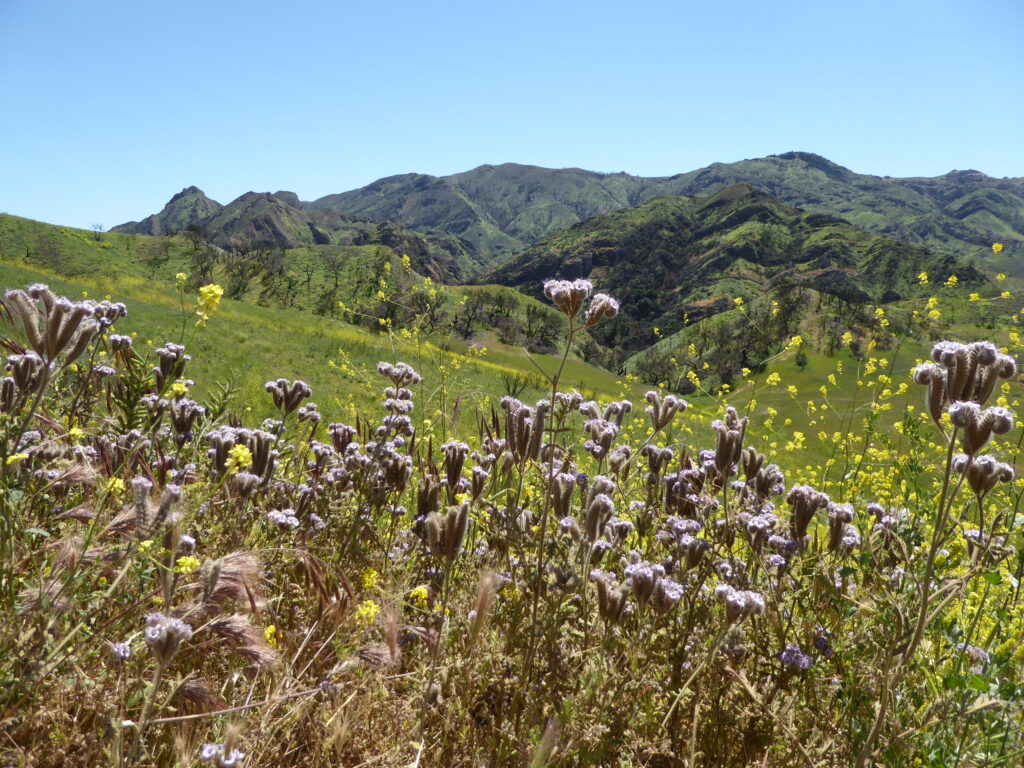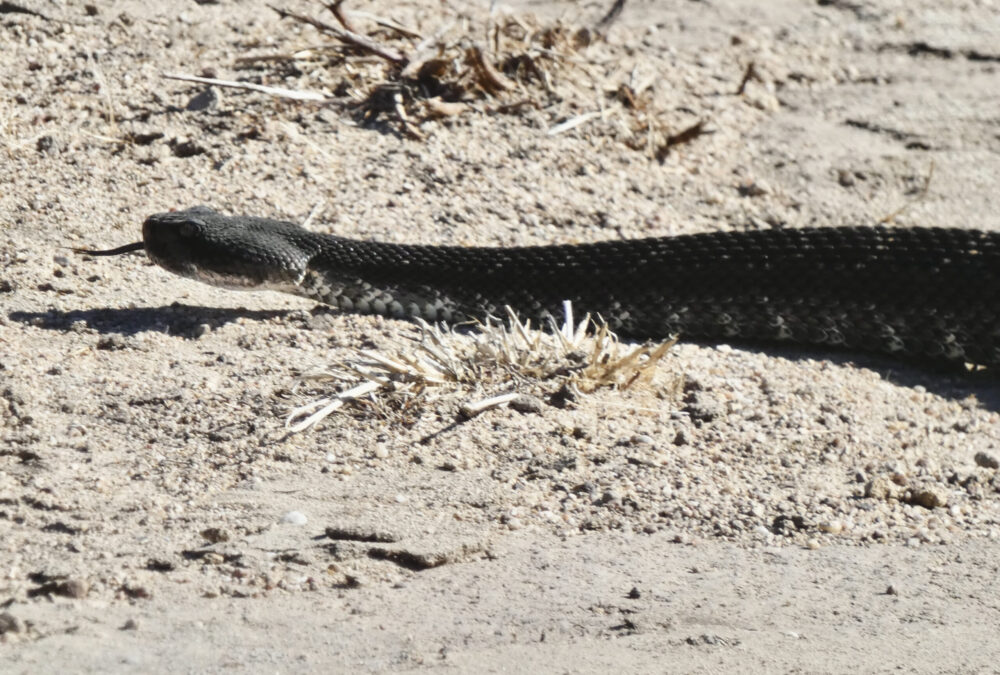
Santa Monica Mountains National Recreation Area trail advocate and builder Milt McAully often hiked in shorts, but pants, a long-sleeved shirt, and sturdy shoes with thick socks are recommended for those of us mere mortals who are vulnerable to poison oak, nettles and thistles, ticks and sunburn.
Ticks are a real hazard for dogs and humans and can transmit a range of diseases. Wearing lighter colors can help reveal any unwelcome hitchhikers, and it’s a good idea to do a tick check before heading home. Ticks like to wait for unwitting passers-by on the ends of grass stems or twigs overhanging the trail. Check clothes—and dogs—for ticks before they have a chance to begin sucking blood.
Poison oak is the best known local nemesis of hikers. This beautiful plant thrives throughout the Santa Monica Mountains, and can grow as a shrub, a vine, or even a small tree. Poison oak is inevitably abundant along streams and in oak groves—anywhere humans may be tempted to rest in the shade
The skin irritant is in the form of an oily coating on every part of the plant and is still a risk even when the plants are dormant in winter and there are no leaves. The rash caused by contact with the oils ranges from mild itching to extremely severe blistering that lasts for weeks and can cause scarring. Avoiding the plant is the best option.
Washing with dish detergent and lots of water is the most effective way to remove the oil from skin.
Long sleeves and long pants can help prevent exposure, but it is important to wash anything that comes in contact with the plant in hot water with plenty of detergent to break down the oil. Dogs and horses can transmit the irritant to their humans. The oil can also cause problems if it ends up on shoes, trekking poles and walking sticks.


Poison oak isn’t the only plant that can cause problems. Nettles only grow in damp areas like creek crossings, but they are abundant, and can grow to be enormous. The sting is caused by tiny hairs on the plant’s leaves that contain a skin irritant similar to the sting of jellyfish. Coming into direct contact with nettles is painful and can raise a crop of blisters but the irritation is rarely serious.
Many plants in the phacelia family have a similar defense. The aptly named scorpion weed can cause a serious reaction in some people, with a painful rash that can last for several days.
I’ve ruined many pairs of socks running into the invasive and painfully prickly star thistle, and this plant can be harmful to horses if consumed. The spiny seeds of non-native brome grass are no fun to pick out of one’s shoes and they can get between a dog’s toes or into an animal’s ear or nose. Keeping dogs on leash can help avoid problems. Lightweight knit fabric shoes and all-terrain sandals are better for the beach than they are for trail hikes. There are far too many sharp, spiny, thorny, itchy things in our mountains for sandals or running barefoot.
Rattlesnake bites are rare and tend to occur when an unsuspecting hiker accidentally steps on a snake. High-topped hiking boots and jeans or twill pants offer at least the illusion of protection and may actually help to prevent, or at least hinder, venom from being injected during this type of incident.
The best way to avoid snakebite is to stay in the middle of the trail and away from deep brush, grass or rocks. Pay attention not only to what is ahead, but also what might be on either side. Snakes sometimes snooze on the edge of the trail under the shelter of overhanging vegetation. Walking with a heavy step and thumping one’s walking stick firmly on the ground as one goes are supposed to alert snakes that humans are approaching. I suspect we make enough noise on our own that they probably have plenty of warning, but I do it anyway.
Rattlesnakes bromate—become inactive—when the weather is cool, but they don’t really hibernate in our area. While it is more common to encounter them on the trail in spring and summer, they can turn up anytime.
A smart hiker also remembers to look behind, especially when passing a branch in the trail. This doesn’t help avoid snake encounters, but remembering what that intersection looked like can help avoid confusion on the return journey.
It’s a good idea to wear a hat and bring plenty of water, a windbreaker or light jacket. The weather can change rapidly on the trail. A fully charged cell phone is essential. Many parts of the mountain still have little or no cell service, but it’s often possible to send a text when phone service isn’t available, and most phones can double as a flashlight in an emergency. A compass and a map are only useful for those who know how to use them.
A small basic first aid kit with bandages, alcohol wipes, and antihistamines for allergy sufferers is also essential. Anyone with a bee or wasp allergy should make sure to pack an Epi pen.
A surprising number of people get lost in the Santa Monica Mountains every year, usually because they didn’t give themselves enough time to get back to where they started before nightfall. The biggest health hazard is dehydration and heat stroke, and we’ve had several heat related fatalities in recent years.
Falls are a major source of injuries on the trail. Anyone, no matter how experienced a hiker or how fit and agile, can turn an ankle or lose their footing, but the vast majority of severe falls are the result of going off trail or attempting to climb cliffs, explore ledges, or reach attractions like waterfalls, Rock Pool in Malibu Creek State Park and Escondido Falls in Escondido Canyon Park are injury hotspots.
Staying on the trail and being aware that it is easier to climb up rocks than it is to climb down them can help prevent making more work for the already overworked Malibu Search and Rescue team.
These amazing volunteers, organized under the auspices of the Los Angeles County Sheriff’s Department and in partnership with the County Fire Department, rescue stranded climbers, pull victims out of vehicles that have gone over the side of steep canyon roads, and find lost hikers in the dead of night. Sometimes they also have to retrieve the dead from accidents at off-limit places like the dangerous Rindge Dam, where rock diving has resulted in numerous fatalities and catastrophic head injuries in recent years.
While no one enjoys hiking in a mask, it’s important to wear one whenever passing other hikers on the trail. The new trail etiquette for life in the time of COVID is to stop and put on a mask when other hikers are present, and to give passing hikers and bikers as much space as possible to go safely by.
Many popular trails are crowded year-round, as Angelenos look for a safe and fun diversion. Going early or on a weekday can help avoid the crowds. Picking a less popular route can help, too. Anything with water for a destination, like Rock Pool in Malibu Creek State Park, or any of the well-known waterfall trails will be crowded. Choosing a trail that doesn’t feature an Instagram-able destination is a good option. This is, however, not the time to go off trail. While COVID-19-related hospitalizations are beginning to decline, many hospitals are still operating above capacity.
“The mountains are calling and I must go,” John Muir famously wrote. Residents of the Santa Monica Mountains are blessed to live in a place where that call can be answered by stepping out of one’s door and heading for the nearest trail. Just be safe out there!





